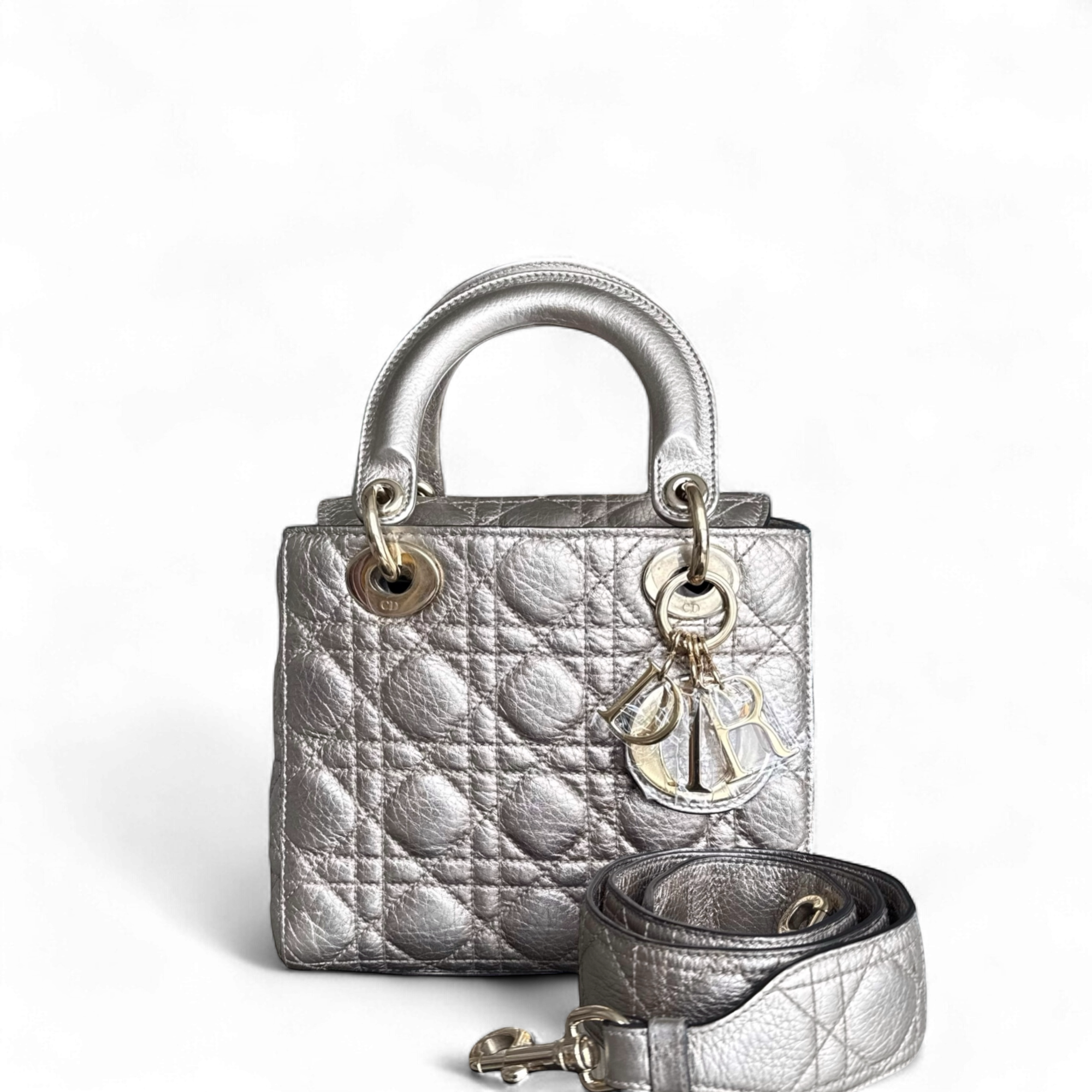Where Are Diamonds Found: Discover the Origins of Nature's Treasures
Diamonds are one of the most sought-after treasures on this planet, deemed by many as the most splendid form of gems. For centuries, diamonds have captivated the minds and hearts of empires and every common person. But this breathtaking gemstone and treasure has many question marks around its origin. The route a diamond takes from the farthest, remote foreign countries to beneath our continent’s Earth mantle is astoundingly strenuous. I will illuminate the astounding geological history behind the world’s most remarkable suppliers of diamonds and the hotspots where they are extensively mined. In this guide, a person unfamiliar with how diamonds are formed, why they are termed as timeless diamonds, and where exactly they are found. Will have their queries satisfactorily resolved.
How Are Natural Diamonds Formed?

It is estimated that natural diamonds form about 90 to 120 miles beneath the crust of the Earth’s surface, in the Earth’s previously molten mantle under high heat and pressure, reaching temperatures of at least 2000 degrees Fahrenheit. This process starts with carbon over the span of millions to billions of years. These elements bond together in intense conditions of around 2500°F and “Build “ the diamond structure. Its eventual eruption of volcanic kimberlite or lamproite pipes makes these gems near the surface, while it forms closest to Earth's crust.
What Role Does Heat and Pressure Play in Diamond Formation?
- Graphite-to-Diamond Transformation: The conversion of graphite to diamond begins with heat and pressure which cause the carbon atoms bonded in the hexagonal structure of graphite to rearrange into the cubic crystal lattice structure of diamond.
- High-Temperature Bonding: Heat above 2000°F is sufficient to break bonds between atoms, allowing for the formation of covalent bonds associated with diamond.
- Structural Stability: A diamond can only be formed and kept stable under extreme pressure greater than 725000 pounds per square inch, as those conditions allow it to maintain its crystalline structure and not revert back to graphite.
- Crystal Growth: Carbon atoms are incorporated into the diamond lattice at a constant temperature and pressure, sustaining the growth of the diamond crystal.
- Elimination of Impurities: The uniformity and clarity of a diamond's structure is achieved by maintaining the high-temperature and high-pressure conditions that help reduce inclusions and irregularities in the diamond.
How Do Volcanic Activity and Kimberlite Pipes Bring Diamonds to the Surface?
Volcanic action brings diamonds to the surface of the Earth through kimberlite pipes, which are vertically aligned, narrow channels of volcanic rock. These pipes are created when magma from the Earth’s mantle deep within the ground ascends rapidly, transporting diamonds contained in the rock. The speed of the magma's ascent helps the embedded diamonds not to be subjected to surface temperatures and pressures, which would turn them into graphite. After a volcanic eruption, the cooled magma results in the solidification of kimberlite deposits, which leaves diamonds positioned at or near the surface of the Earth. These unusual processes make kimberlite pipes the main source from which natural diamonds can be found.
Where Are Diamonds Usually Found in Nature?
The primary locations of diamond occurrence include regions with stable ancient crusts (cratons) of Africa, Russia, Canada, and Australia. These minerals are mainly located in the volcanic pipes, lamproite and kimberlite, which transport minerals from the Earth's deep mantle layers. In addition, on occasion, diamonds can be found in rivers and along the coasts, which have been moved from their place of origin through geological processes; these locations are called alluvial deposits.
Which Countries Are the Largest Producers of Diamonds?

What Makes South Africa a Notable Diamond-Rich Country?
South Africa remains one of the most prominent countries in the world for diamond trade due to its extensive deposits, infrastructure, and historical significance in diamond mining. The discovery of diamonds in Kimberley in the late 19th century marked the start of large-scale mining. South Africa today remains one of the top producers of diamonds in the world, and it is home to some of the world's most famous mines, like the Premier Mine, now the Cullinan mine, which produced the Cullinan diamond, the world’s largest gem-quality diamond. South Africa also has developed its appearance and is well-renowned for its mining industry, cementing the country’s role as a major producer of diamonds.
How Do Canadian Diamonds Differ From Others?
Due to strict mining locations which are often remote, Canadian diamonds cost slightly more than others. However, they are conflict free, sourced responsibly, environmentally friendly, and have fewer internal irregularities.
| Parameter | Canadian Diamonds | Other Diamonds |
|---|---|---|
|
Conflict-free |
Yes |
Not always |
|
Ethical |
High standards |
Varies |
|
Environment |
Strict regulations |
Varies |
|
Purity |
Fewer irregularities |
Standard |
|
Cost |
Higher |
Lower |
|
Origin |
Canada |
Global |
|
Traceability |
High |
Varies |
Why Is Botswana Known for Its Diamond Production?
Diamonds are Botswana’s best product and come from one of the richest deposits in the world, which, along with their ethical mining methods, allows the country to significantly impact the international diamond industry. The Jwaneng and Orapa diamond mines are some of the biggest in the world and are operated by a joint venture between the Government of Botswana and the De Beers Group. This partnership guarantees that diamond revenue is used for national development. Education, healthcare, and infrastructure projects are funded as a result of diamond revenue. Ethically obtained Botswana diamonds have earned the country a remarkable reputation in the industry.
What Are the Most Famous Diamond Mines in the World?

How Did the Cullinan Mine Gain Its Reputation?
The Cullinan Mine is best known for its remarkable diamonds, especially some of the largest and highest-quality in the world. Discovered in 1902 in South Africa, it is most famous for the Cullinan diamond, which is the largest gem-quality rough diamond ever found, weighing 3,106 carats. Many diamonds from the mine, including those cut from the Cullinan diamond, form part of prestigious collections like the British Crown Jewels. It maintains its reputation and historically remarkable status as a source of extraordinary gemstones by still yielding rare blue and flawless diamonds.
What Makes the Kimberley Mine Historic?
The Kimberley Mine or ‘Big Hole’ is of historical importance for having had a major influence on the diamond industry and world trade in the 19th and early 20th centuries. It was discovered in 1871 as one of the first large-scale diamond mines in the world and helped foster the establishment of De Beers, which became one of the world’s most powerful companies in the diamond mining and trading industry. The mine indicates the advancements and impacts caused by the industrial revolution in regards to the diamond mining industry, and despite its closure, serves as a landmark and a symbol of immense socio-economic change the world underwent due to the diamond rush.
Why Is the De Beers Mine Significant in the Diamond Industry?
The De Beers Mine holds importance in the scope of the diamond industry as it marked the onset of systematic industrial mining of diamonds, and it fundamentally transformed the international trade of diamonds. This was central to the growth of the De Beers Company, which controlled almost all of the diamond business and trade for over seventy years during the twentieth century. It changed extraction and trade benchmarks with its operational advancements, shaping the industry’s infrastructure, economics, and raising global standards. Its impact illustrates how diamonds underwent a metamorphosis from being scarce geological discoveries to sought-after, luxurious items.
How Does the Kimberley Process Ensure Ethical Diamonds?

What Challenges Does the Kimberley Process Face?
- Limited Scope: The Kimberley Process does not take into consideration human rights violations, labor practices, or mining environmental impact During the mining of crude diamonds. It only concentrates on the trade of unfinished diamonds.
- Weak Enforcement Mechanisms: Compliance gaps and gaps in the enforcement of obligations under the Kimberley Process arise as a consequence of each member State being solely responsible for enforcement and compliance supervision of domestic policies stemming from the Kimberley Process.
- Smuggling and Fraud: Illicit document forgery and smuggling circumvent certification under the Kimberley Process, making it useless.
- Lack of Transparency: The process’s insufficient public reporting and absence of independent audits create opportunities for oversight, which causes stakeholders to lose trust.
- Exclusion of Polished Diamonds: The ethically dubious practices cannot be eradicated because polished and cut diamonds are outside the reach of the Kimberley Process.
How Are Conflict Diamonds Being Controlled?
The containment of conflict diamonds revolves around the Kimberley Process Certification Scheme (KPCS). This global initiative obligates participant nations to provide certificates for uncut diamonds that are conflict-free prior to any trading taking place. It also requires precise record-keeping and the sealing of diamond shipments in tamper-resistant aids for corruption-proof containers to guarantee no corruption. Moreover, a large number of officials and people in the industry, other than the government, work towards improving the tracking systems within the supply chain, focusing on the downstream procurement. Despite its shortcomings, the KPCS is still considered one of the key tools in minimizing the flow of conflict diamonds into international markets.
What Are the Characteristics of Colored Diamonds?

What Makes a Pink Diamond Unique and Valuable?
- Rarity: Because of pink diamonds being one of the rarest colored of them all, they are an object of desire for both investors and gem collectors.
- Color Intensity: The shade of a pink diamond is quite significant when determining a diamond’s value and vibrant shades are extremely sought after and more expensive.
- Origin: The exclusivity of pink diamonds is elevated by the fact that they are only located in a small number of deposits, such as the now defunct Argyle mine located in Australia.
- Natural Formation: Unlike most colored diamonds which derive their hues from chemical infused processes, pink diamonds gain their color due to a peculiar and unique distortion during the crystallization phase.
- Symbolism: This makes it popular for timeless events such as engagement rings. Due to this reason, pink diamonds carry value of romance which is accompanied by love and also, luxury.
- Market Demand: Compared to other gems, these are the perfect choice for an investment due to their incredible cost in the market, which paired with scarce supply amplifies demand.
How Are Yellow Diamonds Different From Colorless Diamonds?
Compared to colorless diamonds, yellow diamonds have differences in color origin, rarity, pricing, grading and visual appeal.
| Parameter | Yellow Diamonds | Colorless Diamonds |
|---|---|---|
|
Color |
Yellow hue due to nitrogen |
Completely colorless |
|
Rarity |
Rarer than colorless |
More common |
|
Pricing |
Varies by intensity; vivid hues cost more |
Higher for top grades |
|
Grading |
Fancy color scale (e.g., vivid, intense) |
D-Z colorless scale |
|
Visual |
Unique, vibrant appeal |
Classic, timeless look |
Where Can One Find Diamonds in Alluvial Deposits?
Diamonds are usually found in alluvial deposits within riverbeds, streams, and shorelines where water has eroded primary sources of diamonds, such as kimberlite pipes, transporting the diamonds downstream. These deposits are most common in areas characterized by volcanic activity. Sierra Leone and Angola, as well as some regions in Brazil and India, are prominent for discovering alluvial diamonds. Prospectors frequently sift through the sediments in these regions to find the gemstones.
Frequently Asked Questions (FAQs)
Q: What countries in the world have found and are mining for diamonds?
A: Different nations across the globe have atuheorized and located diamond resources, with South Africa, Russia, Botswana, Canada, and Australia holding large proportionate deposits. These gems are acquired through a complex processes known as drawing out kimberlite pipes.
Q: What are the different ways of mining diamonds?
A: There are multiple techniques which can be used. For example, ocean floor mining has become increasingly popular due to its efficient and profit yielding processes. During the initial stages, raw stone materials must be crushed in order to access diamond.
Q: How do companies perform mining operations in the diamond industry?
A: Companies directly engage in the diamond industry as key players in terms of large scale operations by performing drills and managing large worksites. These types of companies are known to use heavier equipment for larger output such as the Rio Tinto team who run mines all over and provide offers exceeding millions of carvts of diamonds annually.
Q: What is the significance of some diamonds of certain countries that others do not offer?
A: A nations reputation will extensively influence its gems existence and grade. Diamonds originating from Botswana are well-known for their superb purity. A nations reputation and ethical ramifications can impact a markets perception and appeal, transforming it drastically.
Q: In what ways do regions of igneous rock and extreme heat influence the formation of diamonds?
A: Specifically beneath layers of igneous rocks, enormous pressure coupled with intense heat, exists deep within the earth's mantle which is where diamonds form. Volcanic activity will later bring them to the surface. Through this process, the ideal conditions are attained over millions of years for perfect crystal formation.
Q: Are there locations outside of traditional diamond mines where they may be found?
A: Indeed, diamonds are located in non-conventional parts such as the ocean floor where they can be extracted through specialized techniques which capture diamonds that are transported by rivers and deposited in ocean sediments.
Q: In what ways does a miner add value to the supply chain of diamonds?
A: The value a miner adds is crucial because they physically dig the diamonds from the ground, thus adding immense value. Once mined, the diamonds may then undergo a cutting and polishing phase with artisans who transform the unprocessed stones into exquisite jewels.
Q: What is remarkable about the Ekati Mine of the Northwest Territories?
A: The Ekati Mine is Canada's also surfaces Canada’s first diamond mine which makes it a standout within the country. In addition to modern techniques in diamond mining, it is also a significant contributor in the production of diamonds, and this is not only for the region, but for all of Canada.
Q: In what ways does fluorescence affect the appearance of a diamond?
A: The effects of ultraviolet light on diamonds with fluorescence properties can lead to certain optical changes. These diamonds may show a blue glow, which can enhance or diminish their value depending on the market.
Q: Are there any famous diamond locations along the Orange River?
A: The Orange River is known for the occurrence of alluvial diamond deposits which is where diamonds are found in the riverbeds after being weathered from primary sources. This area is historically important for diamond mining in southern Africa.
Reference Sources
- Diamond History and Lore - GIA (Gemological Institute of America): Contains the diamond history and the geology pertaining to its finds.
- How Are Diamonds Made? - Ask An Earth And Space Scientist (Arizona State University): This source provides information on where diamonds are found and in what form, as well as their relation to Kimberlite volcanoes.
- Pacific Coast Diamonds - Wyoming State Geological Survey: Covers nontraditional sources of diamonds along the Pacific Coast of the United States.
- Diamonds and Science - NASA Astrobiology: Looks into the scientists on the formation of diamonds and their geo-entropy.
- Diamond
- Gemstone
- Mining
Contact Luxury Evermore should you need help with acquiring or building up your collection. There is a variety of brands with different styles, as well as sizes, and colors, for example, Hermes, Chanel, lv and Dior. If you are not lucky enough to find the bag you are looking for on our website then our concierge team will probably be able to order it for you. We provide 100% authenticity guarantee for all our bags, and any item sold on this site will be dispatched to you within one to two business days upon receipt of the payment.




































































